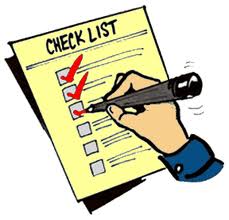English language learners often find that one of the toughest things to learn about the English language is article use. While some languages utilize articles, not all of these have both definite and indefinite articles as in English, so as non-native speakers begin to learn the intricacies of English, articles can be especially troubling.
Technically, an article is an adjective, as the article modifies the noun just as an adjective does. Articles are also referred to as “determiners” as they determine whether something is specific or nonspecific. Articles in English are either definite (specific), or indefinite (nonspecific).
THE – The Definite Article
The is a definite article, which refers to something specific. For example, “Let’s go to the movie,” refers to a specific movie. If the sentence stated, “Let’s go to a movie,” it could mean any movie, or a nonspecific movie.
Other examples of definite articles:
I want to go to the party. (a specific party, not just any party)
Can a have the cookie? (a particular cookie, not just any cookie)
I want the coat on sale. (a particular sale coat)
Definite articles are also used before names of educational departments, buildings or institutions, such as
I want to go to the University of Nebraska.
He works in the Department of Gerontology.
Definite articles also precede bodies of water and mountain ranges:
I have heard the Great Lakes are beautiful.
Have you been to the Rocky Mountains?
I want to ski the Swiss Alps.
Other notes on definite articles
If you are referring to a country that is only one word, you would not use an article:
I am from Africa. (not the Africa)
I have visited France. (not the France)
You would not use “the” for planets:
Incorrect: The Pluto is the smallest planet.
Correct: Pluto is the smallest planet.
Finally, omit “the” before cities, towns, states, continents, names of streets, languages, nationalities, sports (football), and academic subjects.
But DO use “the” before rivers, oceans, seas, specific points on the globe (the South Pole), geographical areas, deserts and forests.
A and An – Indefinite Article
A or An are indefinite articles, which refers to a non-specific noun. For example, “Can I get a dog?” refers to any dog in general. In contrast, “Can I get the dog,” is referring to one specific dog. The beginning letter and sound of a word will determine whether you’ll use A or An. A singular noun beginning with a vowel will use “an”: an orange; an airplane; an opera. Also, an will precede a noun with a silent “h” such as hour. However, if the “h” is not silent, you would use the article a, such as a horse or a hobby.
A singular noun beginning with a consonant will use “a”; a car; a boy; a tornado. “A” is also used with a singular noun that has a consonant sound, such as university, which begins with a “y” sound, a consonant.
Other examples of indefinite articles:
I’d like to go to a university. (any university will do)
Can I have an apple? (any apple)
I want to see an octopus. (no particular octopus)
We do not use an indefinite article with plural nouns and noncount nouns:
She was wearing red shoes. (shoes is a plural noun)
She has long brunette hair. (hair is a noncount noun)
I want to wear denim jeans to work Friday. (jeans is plural)
I have so much homework to do! (homework in noncount)
This is only a brief morsel of an extremely complex English grammar rule, a rule that takes a lot of time to master for English Language Learners (and even native-English speakers!). For more help, a great resource is Purdue Owl Online Writing Lab – or your local writing center!
Other resources:
http://www.eslcafe.com/grammar.html
http://www.usingenglish.com/
http://www.esl-lounge.com/student/index.php




